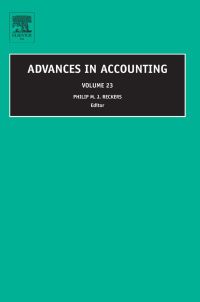


You have been asked to evaluate the economic implications of various methods for cooling condenser effluents from a 200-MW steamelectric plant. There are two basic types of cooling towers: wet and dry. Furthermore, heat may be removed from condenser water by (1) forcing (mechanically) air through the tower or (2) allowing heat transfer to occur by making use of natural draft. Consequently, there are four basic cooling tower designs that could be considered. Assuming that the cost of capital to the utility company is 15% per year, your job is to recommend the best alternative (i.e., the least expensive during the service life). Further, assume that each alternative is capable of satisfactorily removing waste heat from the condensers of a 200-MW power plant. What noneconomic factors can you identify that might also play a role in the decision-making process? Alternative Wet Tower Wet Tower Dry Tower Dry Tower Mech. Draft Natural Draft Mech. Draft Natural Draft Initial cost $2.7 million $9.2 million $4.8 million $8.9 million Power for I.D. fans 40 200-hp I.D. fans None 20 200-hp I.D. fans None Power for pumps 20 150-hp pumps 20 150 hp pumps 40 100-hp pumps 40 100-hp pumps Mechanical maintenance/year $0.13 million $0.12 million $0.16 million $0.13 million Service life 30 years 30 years 30 years 30 years Market value 0 0 0 0 100 hp = 74.6 kW; cost of power to plant is 2.2 cents per kWh or kilowatt-hour; induced-draft fans and pumps operate around the clock for 365 days/year (continuously). Assume that electric motors for pumps and fans are 90% efficient. (a) The AW of Wet Tower, Mechanical Draft is $____ (b) The AW of Wet Tower, Natural Draft is $ (c) The AW of Dry Tower, Mechanical Draft is $ (d) The AW of Dry Tower, Natural Draft is $ You have been asked to evaluate the economic implications of various methods for cooling condenser effluents from a 200-MW steamelectric plant. There are two basic types of cooling towers: wet and dry. Furthermore, heat may be removed from condenser water by (1) forcing (mechanically) air through the tower or (2) allowing heat transfer to occur by making use of natural draft. Consequently, there are four basic cooling tower designs that could be considered. Assuming that the cost of capital to the utility company is 15% per year, your job is to recommend the best alternative (i.e., the least expensive during the service life). Further, assume that each alternative is capable of satisfactorily removing waste heat from the condensers of a 200-MW power plant. What noneconomic factors can you identify that might also play a role in the decision-making process? Alternative Wet Tower Wet Tower Dry Tower Dry Tower Mech. Draft Natural Draft Mech. Draft Natural Draft Initial cost $2.7 million $9.2 million $4.8 million $8.9 million Power for I.D. fans 40 200-hp I.D. fans None 20 200-hp I.D. fans None Power for pumps 20 150-hp pumps 20 150 hp pumps 40 100-hp pumps 40 100-hp pumps Mechanical maintenance/year $0.13 million $0.12 million $0.16 million $0.13 million Service life 30 years 30 years 30 years 30 years Market value 0 0 0 0 100 hp = 74.6 kW; cost of power to plant is 2.2 cents per kWh or kilowatt-hour; induced-draft fans and pumps operate around the clock for 365 days/year (continuously). Assume that electric motors for pumps and fans are 90% efficient. (a) The AW of Wet Tower, Mechanical Draft is $____ (b) The AW of Wet Tower, Natural Draft is $ (c) The AW of Dry Tower, Mechanical Draft is $ (d) The AW of Dry Tower, Natural Draft is $









